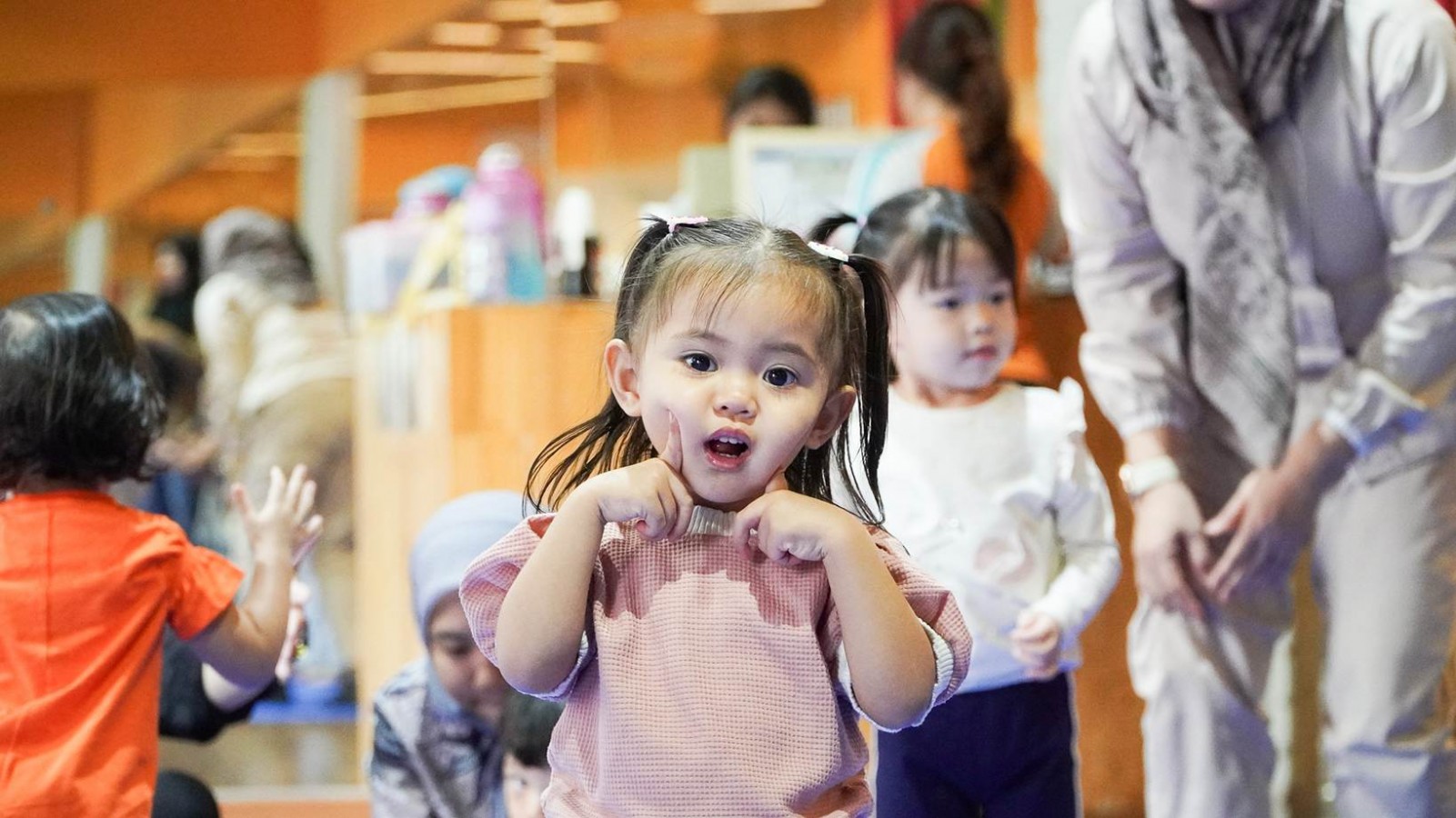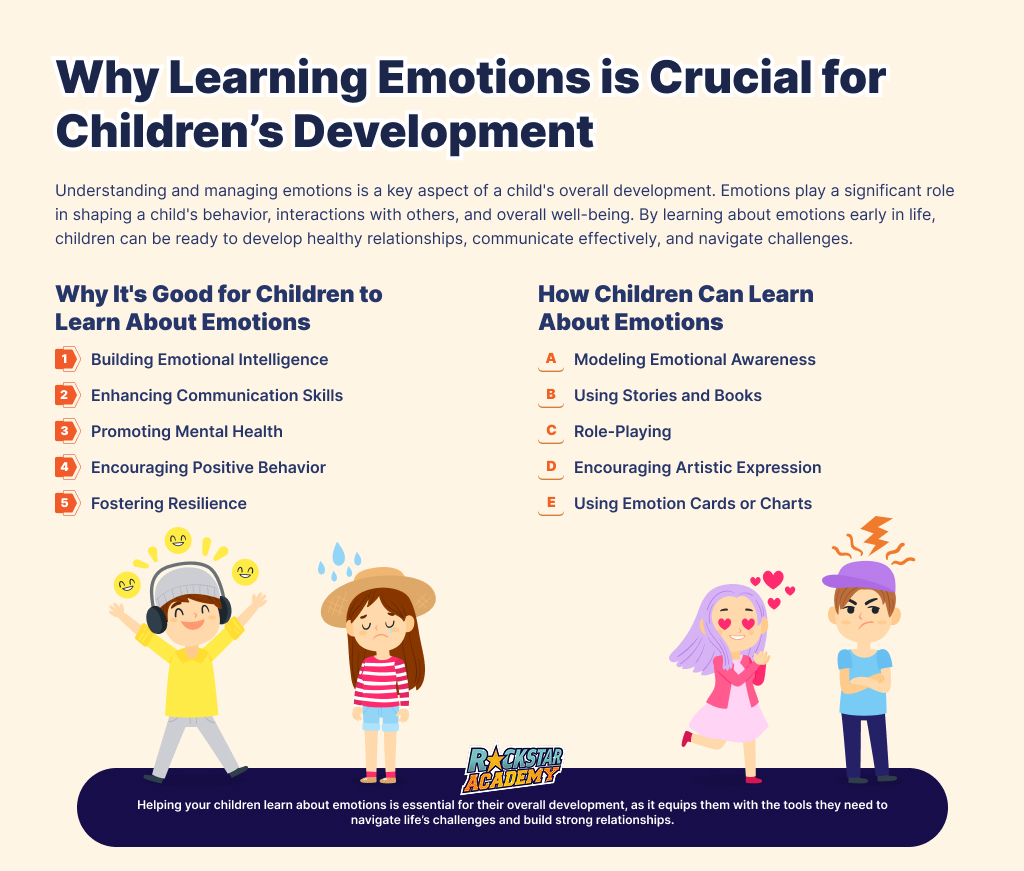Why Learning Emotions is Crucial for Children’s Development

Understanding and managing emotions is a key aspect of a child's overall development. Emotions play a significant role in shaping a child's behavior, interactions with others, and overall well-being. By learning about emotions early in life, children can be ready to develop healthy relationships, communicate effectively, and navigate challenges.
In this article, we’ll explore why learning emotions is crucial for children’s development, how children can learn about emotions, and practical ways to help kids identify, express, and connect their emotions. We'll also provide some fun and effective ideas for teaching children about emotions, let’s check it out!
Why It's Good for Children to Learn About Emotions
Learning about emotions is a fundamental aspect of a child's development. It influences how they interact with the world around them, how they form relationships, and how they manage challenges. Below, we'll explore why it's so beneficial for children to learn about emotions.
1. Building Emotional Intelligence
Emotional intelligence (EQ) refers to the ability to recognize, understand, and manage our own emotions, as well as the ability to recognize and influence the emotions of others. For children, developing emotional intelligence is crucial because it lays the foundation for social interactions and personal well-being.
When children learn to identify their emotions, they become more self-aware. This self-awareness allows them to better understand their reactions to different situations.
Emotional intelligence also plays a significant role in leadership and teamwork, skills that are valuable throughout life. Children with high EQ are often more adaptable and resilient, which helps them cope with changes and challenges more effectively.
2. Enhancing Communication Skills
Communication is a cornerstone of healthy relationships, and understanding emotions is key to effective communication. When children learn to identify and articulate their emotions, they can express their needs, desires, and concerns more clearly.
This ability to communicate their feelings helps them build stronger connections with others, whether it's with peers, teachers, or family members.
For example, if a child can say, "I'm feeling frustrated because I don't understand this homework," they are more likely to receive the help they need. Without the ability to express this frustration, the child might act out or withdraw, leading to further difficulties.
3. Promoting Mental Health
Mental health of children is as important as their physical health, and learning about emotions is a key factor in maintaining mental well-being. When children understand their emotions, they are better equipped to manage stress, anxiety, and other emotional challenges.
This understanding helps them develop coping strategies that are essential for navigating the ups and downs of life.
4. Encouraging Positive Behavior
Children who understand their emotions are more likely to exhibit positive behaviors. When they can identify what they are feeling and why, they are less likely to act out inappropriately.
Understanding emotions also helps children make better choices. They learn that certain actions, like taking deep breaths or talking to an adult, can help them calm down when they are upset. This self-regulation is crucial for positive behavior, both at home and in school.
5. Fostering Resilience
Resilience is the ability to bounce back from setbacks and adapt to difficult situations. Emotional learning is a key component of resilience because it helps children understand and manage their emotions during challenging times.
When children know how to process emotions like disappointment, fear, or sadness, they are better equipped to handle life’s inevitable ups and downs.
How Children Can Learn About Emotions
Children learn about emotions in various ways, and each method contributes to their emotional development. Below are explanations and ideas on some of the most effective ways children can learn about emotions:
A. Modeling Emotional Awareness
Children are natural imitators as they learn a lot by observing the behaviors and emotions of the adults around them. As parents and caregivers, modeling emotional awareness is one of the most powerful ways to teach children about emotions.
This involves openly expressing your own emotions and talking about them in front of your child.
For example, if you’re feeling happy, you might say, “I’m feeling really happy today because we’re spending time together!” Conversely, if you’re upset, you could say, “I’m feeling a little frustrated because something didn’t go as planned.” By doing this, you show that it’s okay to have a range of emotions and that expressing them is a normal part of life.
Modeling also includes how you manage your emotions. For instance, if you’re feeling stressed, you might demonstrate coping strategies like deep breathing or taking a walk. By seeing these actions, children learn healthy ways to deal with their own emotions.
B. Using Stories and Books
Stories and books are incredibly effective tools for teaching children about emotions. Through the experiences of characters, children can explore various emotions in a safe and controlled environment.
Books that focus on emotions often use simple language and relatable situations, making it easier for children to connect with the content. After reading, you can discuss the emotions that the characters experienced and relate them to your child’s own life.
Questions like, “How do you think the character felt when that happened?” or “Have you ever felt the same way?” encourage children to reflect on their emotions.
Over time, your child will start to recognize patterns and may even begin to anticipate how characters might feel in certain situations. This not only helps with emotional understanding but also fosters empathy as they put themselves in the characters’ shoes.
C. Role-Playing
Role-playing is a fun and interactive way for children to explore emotions. It allows them to act out different scenarios and practice expressing their feelings in a safe environment.
Through role-playing, children can experiment with different emotional responses and learn about the consequences of those responses.
It’s a great way to teach them that there are multiple ways to handle a situation and that some responses are more effective or appropriate than others.
D. Encouraging Artistic Expression
Art is a natural form of self-expression, especially for young children who may not yet have the words to describe their emotions. Encouraging children to express their feelings through drawing, painting, or crafting can be a powerful way for them to process and communicate their emotions.
Artistic expression allows for emotional exploration without the constraints of language. Children can use colors, shapes, and forms to represent their feelings, which can be especially helpful for complex emotions that are hard to articulate.
E. Using Emotion Cards or Charts
Emotion cards or charts are visual tools that can help children identify and name their emotions. These typically feature faces with different expressions, each labeled with the corresponding emotion, such as happy, sad, angry, or scared.
By using these tools, children can start to associate the facial expressions they see with the emotions they feel. You can incorporate emotion cards or charts into daily routines.
For example, at the end of the day, you might ask your child to point to the card that best represents how they felt during a specific event or throughout the day. This practice encourages them to regularly reflect on their emotions and helps them build an emotional vocabulary.
Have Your Kids Learn about Emotions?
Helping your children learn about emotions is essential for their overall development, as it equips them with the tools they need to navigate life’s challenges and build strong relationships.
One effective way to support your child's emotional growth is by enrolling them in the Preschool & Kindergarten programs at Rockstar Academy. At Rockstar Academy, your child will not only experience a nurturing educational environment but also engage in various physical activities, events, and competitions designed for different ages, skill levels, and interests.
Our experienced teachers provide the right guidance to ensure that both academic and physical activities help children become more adaptive and confident in their abilities. The importance of a well-rounded curriculum cannot be overstated, as it is crucial for your child's overall well-being and future success.
Plus, Rockstar Academy offers a free trial class for those interested in experiencing our programs firsthand. If you’re ready to give your child the best start in life, make sure to contact Rockstar Academy today!

FAQ
At what age should I start teaching my child about emotions?
You can start teaching children about emotions as early as infancy. Even though they won’t fully understand, using emotion words and showing empathy helps lay the foundation. By preschool age, children can start identifying and expressing basic emotions.
What if my child refuses to talk about their emotions?
Some children may find it difficult to express their emotions verbally. In such cases, encourage alternative methods like drawing, playing, or using emotion cards. Create a safe and supportive environment, and avoid forcing them to talk until they’re ready.
How can I help my child manage strong emotions like anger or fear?
Teach coping strategies like deep breathing, counting to ten, or using a "calm-down" corner. Acknowledge their emotions and help them find constructive ways to express them. For example, saying, "I see you’re angry; let’s take deep breaths together," can be very effective.



